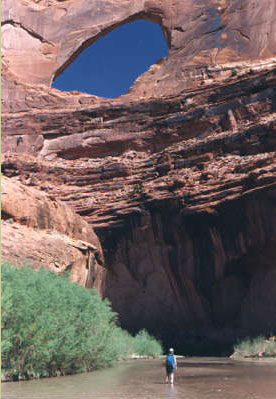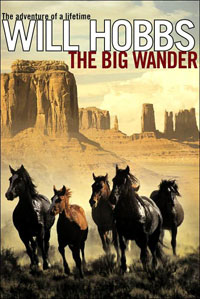 |
How did it get started? It began with the image of a boy, a burro, and a dog wandering in the canyon country. I was inspired by the real-life wanderings of a remarkable young man named Everett Ruess, who disappeared in the canyons of the Escalante River in Utah in the early 1930s. I didn't want to write Everett's story; I wanted to make up a story that would be a tip of the hat to him. I decided to set the story in the summer of 1962. My main character is 14 that summer, just like I was. There's a lot of me in Clay Lancaster. Are there things that happen to Clay that are from your own life? The part about how he acts around girls, for one thing. I was such a romantic, but shy just like Clay. And, like Clay, I was a younger brother. This story has the feel of one particular road trip on Route 66 with my brother Ed. We came across the “baby rattlers” at the trading post, just like in the novel. I would have given anything to have had all the rest of those adventures I cooked up for Clay. Like getting rejected by Marilyn? Ouch! That was harsh! There are a lot of unexpected and funny things that happen in this story, like when the baby burro was born. You named him Burrito. I knew just enough Spanish to be dangerous! Actually, I'd come across a photo of an old prospector in a parade who had a baby burro in his backpack. The way its huge ears and head stuck out of the backpack was priceless. I knew at some point Clay would be walking around with a baby burro in his backpack. I just had to figure out how to make it happen. Where'd the idea of the search for Uncle Clay come from—missing on the Navajo reservation? I made that up. A story needs a good problem. Finding Uncle Clay, who used to be a rodeo star, would provide a challenging problem, given the remote terrain. Once Clay reaches Uncle Clay, the story-within-a-story about the wild horses can begin to unfold. When Clay is with the Navajo family—that part must have required a lot of research. It did. And it was a lot of fun. I read some great books, plus I got help from a man in the Navajo Office of Historic Preservation. A Navajo teacher, after the book came out, told me that her family had forded the San Juan River and the Colorado River to trade silver and blankets with the Mormons in Escalante, just like the family in my story. She assured me that I got it right. I was really happy about that!
The way you write about the canyons of the Escalante River, they must be beyond belief. I hope my readers will visit that incredible redrock canyon country for themselves one day. Grand Staircase-Escalante National Monument protects hundreds and hundreds of square miles of it. See the photo on this page for the exact place where Clay and Uncle Clay are galloping toward the Colorado River in the last pages of the book. That's my wife, Jean, in the photo walking down the shallow river. That blue patch up there is the sky, seen through Stevens Arch. What about Sarah, the girl Clay meets under such embarrassing circumstances? You must mean where Clay has sunk up to his armpits in quicksand and Sarah rides up on her horse, throws a rope around him and pulls him out. I wanted Clay to meet a girl who loves these wild places as much as he does, a girl who has grown up on a ranch in the slickrock country. My niece, Sarah, loves horses, so I named this character after her. What do you hope readers will take away from The Big Wander? As I was writing this story, I had a quotation from Aldo Leopold pinned to my bulletin board. It reads, “I am glad I shall never be young without wild country to be young in. Of what avail are forty freedoms without a blank spot on the map.” I hope my readers will fall in love with wild places, and will be inspired to help preserve them for future generations. |
|

